When you're involved in drone sports, having the right insurance is essential for your safety and protection. Key options include liability insurance, which covers third-party injuries and property damage, and hull insurance for your drone's physical protection. Providers like SkyWatch.AI and Verifly offer tailored policies, varying in cost and coverage limits. You may also want personal accident and payload insurance for added safety. Costs depend on factors like drone value and operational record, with budget-friendly choices available. Selecting the right policy can save you money, while ensuring extensive protection is important. You'll discover more insights shortly.
Importance of Drone Insurance
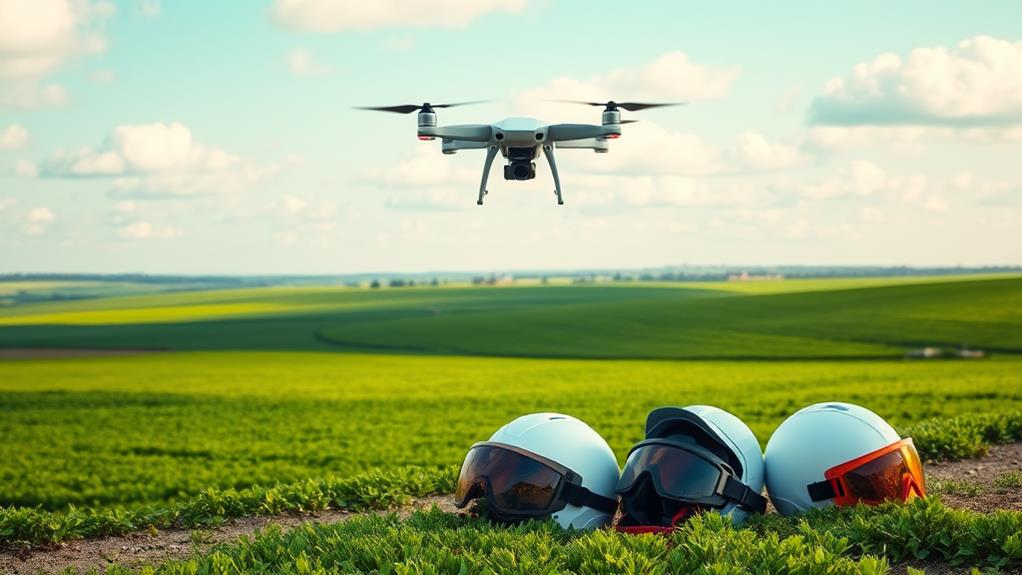
When you're out flying your drone, the last thing on your mind should be the potential risks involved. However, understanding the importance of drone insurance is essential for every drone operator.
Drone insurance offers significant liability coverage that protects you against third-party injuries and property damage. With policies beginning at around $500 to $1,000 annually, you can secure coverage limits of $500,000 to $1 million, which is particularly important for those engaged in commercial operations or drone sports.
As the popularity of drone sports skyrockets, so does the number of registered drones, now exceeding 780,000 in the U.S. This increased usage elevates the financial risks associated with accidents or crashes.
While not legally required in the U.S., drone insurance is highly recommended, especially for commercial clients who often mandate it. Having insurance not only enhances your credibility but also opens up job opportunities.
Ultimately, drone insurance provides peace of mind, allowing you to focus on the thrill of flying. By investing in appropriate insurance policies, you can enjoy your passion without the constant worry of potential financial repercussions from unforeseen accidents.
Types of Coverage Available
Understanding the various types of coverage available for drone sports is essential for any operator looking to protect themselves and their equipment.
One key option is liability insurance, which defends you against claims for bodily injury and property damage to third parties. Coverage limits typically start at $500,000 and can reach up to $25 million.
Hull insurance is another important form, offering protection against physical damage or loss of your drone, generally costing 8-12% of its value annually.
Payload insurance safeguards specialized equipment attached to your drone, like cameras or sensors, ensuring you're covered for expensive gear.
Additionally, personal accident insurance protects you, the operator, in case of injuries during sports activities, helping with medical expenses.
For those needing flexibility, on-demand coverage options are available. These short-term plans allow you to purchase insurance tailored to specific drone sports events or competitions, ensuring you're covered only for the duration of your activities.
Recommended Insurance Providers
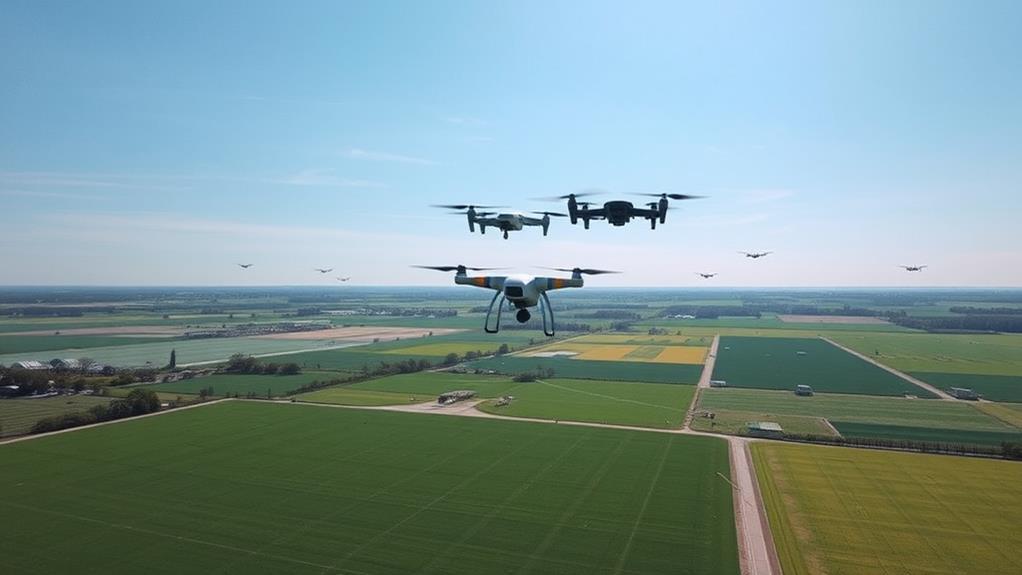
Which insurance provider fits your drone sports needs best? For extensive protection, SkyWatch.AI stands out with customizable drone insurance policies and liability coverage options up to $10 million.
If you're looking for immediate coverage, Thimble allows you to purchase single-occasion insurance, perfect for specific drone sports events.
For those who compete internationally or require daily plans, DroneInsurance.com offers a variety of policies, ensuring robust liability coverage during competitions.
On a budget? BWI Fly provides customizable policies starting around $475 annually, making it a cost-effective choice for drone sports enthusiasts.
If you need flexibility, Verifly offers on-demand insurance starting at just $10 per hour, catering to casual flights or special events.
Each of these providers addresses the unique needs of drone sports participants, ensuring you can find the right fit for your activities.
Whether you prioritize extensive protection, immediate proof of coverage, or budget-friendly options, these providers deliver tailored solutions to keep you insured while enjoying your passion for drone sports.
Cost Factors for Insurance
The cost of drone insurance can vary greatly based on several key factors. Understanding these factors can help you find the best coverage for your needs.
Here are four primary elements that influence insurance costs:
- Coverage Limits: Liability insurance for drone operators typically starts at $500 to $1,000 per year for coverage between $500,000 and $1,000,000. Higher limits can lead to higher premiums.
- Hull Insurance: This type of coverage averages 8-12% of the drone's value annually, impacting your overall insurance costs.
- Operational Record: If you maintain a good operational record, you'll likely enjoy better premium rates, as established operators are viewed as lower risk.
- Geographical Location: Where you operate your drone can greatly affect insurance costs, as some areas may have more regulations or higher risks.
When shopping for quotes, consider these factors to find the best policy.
Saving on Insurance Premiums
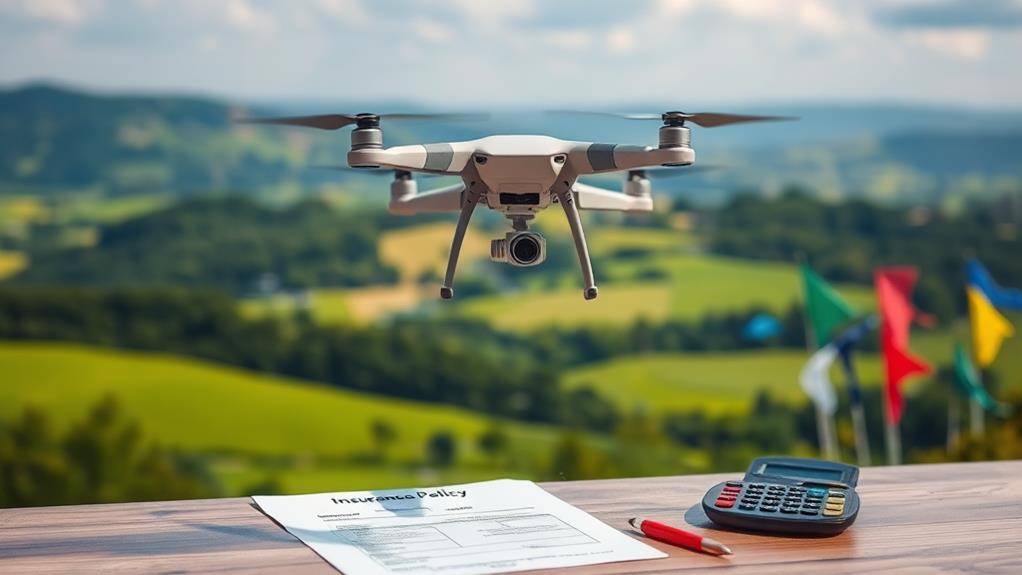
To save on your drone insurance premiums, start by comparing quotes from different providers; this could lead to savings of up to 30%.
Another effective strategy is to increase your deductible, as doing so can lower your premiums by 10-20%.
Compare Multiple Quotes
By comparing multiple insurance quotes, you can uncover significant savings on your drone insurance premiums. Premium costs for drone insurance can vary widely among providers, so it's crucial to explore your options.
Here are four reasons to compare multiple quotes:
- Varied Coverage Options: Different insurance providers offer various coverage options, including basic liability coverage starting around $500 to $1,000 per year.
- Customizable Policies: Many providers, like SkyWatch.AI and Thimble, allow for customizable policies, letting you adjust coverage limits to fit your needs and possibly reduce costs.
- Bundling Insurance: You might find that bundling your drone insurance with other policies—like homeowners or auto insurance—can lead to discounts and lower overall premium costs.
- Reviewing Policy Terms: Regularly comparing policy terms guarantees you're not only getting the best rates but also the most appropriate coverage for your drone activities.
Taking the time to compare multiple quotes can lead you to ideal insurance solutions tailored to your unique needs.
This proactive approach can save you money and provide peace of mind as you enjoy your drone sports.
Increase Deductible Amounts
Raising your deductible amount can lead to considerable savings on your drone insurance premiums, often reducing costs by up to 25% or more.
For instance, if your drone insurance policy has a $500 deductible, opting for a $1,000 deductible could greatly lower your premium costs. This option is especially attractive for those who can afford to pay more out-of-pocket in case of a claim.
Before you decide to increase deductible amounts, it's important to assess your risk tolerance and financial capacity. This decision can impact your ability to cover costs in the event of an accident or damage.
Many insurers allow you to adjust deductibles, providing flexibility to tailor coverage to your specific needs. This can be particularly beneficial for hobbyists or less frequent flyers.
Regularly reviewing and comparing insurance policies will help you identify if increasing your deductibles offers better savings without sacrificing necessary coverage for drone sports safety.
With the right approach, you can enjoy considerable savings on your policy costs while ensuring you maintain adequate protection for your drone activities.
Selecting the Right Policy
Choosing the right drone insurance policy for sports is essential to safeguard your investment and guarantee peace of mind while flying. To make the best choice, consider these key factors:
- Liability Coverage: Confirm your policy includes adequate liability coverage, protecting you against third-party injuries and property damage. Limits typically range from $500,000 to $25 million.
- Hull Coverage: Look for hull coverage to protect your drone from physical damage. This usually costs about 8-12% of the drone's value annually.
- Thorough Protection: Evaluate add-on options like payload insurance for specialized equipment used in drone sports, ensuring thorough protection tailored to your activities.
- Flexible Coverage Plans: Seek providers offering flexible coverage plans, such as short-term or on-demand insurance, allowing you to customize coverage for specific events.
Additionally, consider the provider's reputation, customer support, and user experience.
Comparing quotes and policy features from specialized drone insurance companies will help you find a policy that meets your needs while providing peace of mind.
Regulatory Compliance Considerations
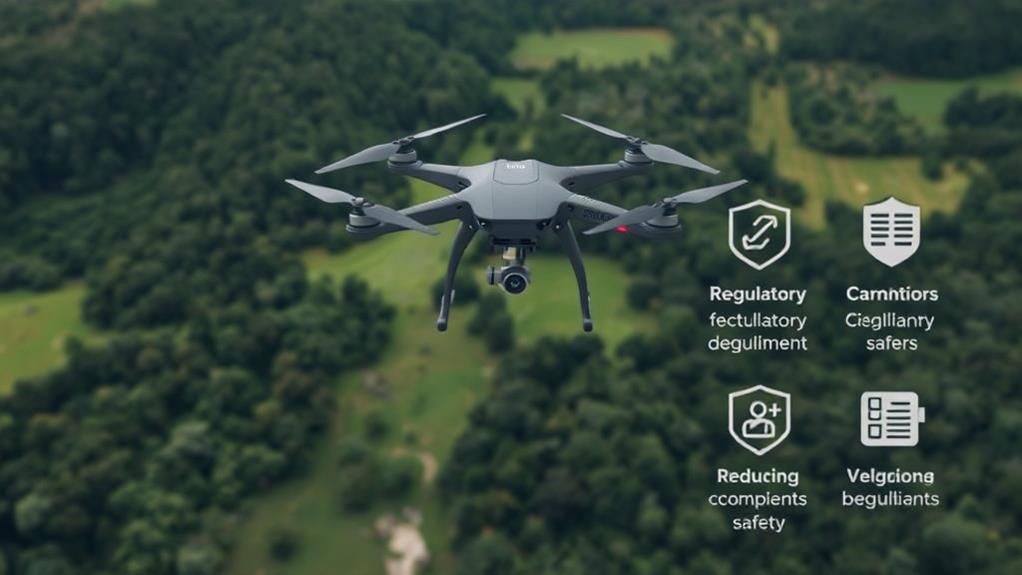
Understanding the insurance options available for drone sports is only part of the equation. Regulatory compliance is essential for guaranteeing safety and legal operation. The Federal Aviation Administration (FAA) mandates that all drones weighing over 0.55 pounds must be registered. This registration is important for drone pilots participating in competitive events, as it guarantees they meet FAA guidelines.
Many states also require drone pilots to obtain liability insurance, especially for commercial drone use during sports events. This insurance helps mitigate risks associated with accidents, providing an extra layer of protection. Insurance providers often necessitate proof of FAA registration and adherence to safety regulations before issuing policies. This highlights the significance of regulatory compliance in securing drone insurance.
Familiarizing yourself with local laws and insurance requirements is critical. Non-compliance can result in fines or penalties, which can quickly overshadow the benefits of your drone activities.
Specialized Insurance Needs
When diving into the domain of drone sports, specialized insurance needs quickly become apparent. To guarantee you're fully protected during your aerial adventures, consider these essential coverage options:
- Liability Coverage: This protects you against third-party injuries or property damage, with policies ranging from $500,000 to $25 million depending on the insurance provider.
- Hull Coverage: Important for safeguarding the physical integrity of your drone, hull coverage usually costs between 8-12% of the drone's value, ensuring you're covered in case of accidents.
- Event-Specific Insurance: Offered by providers like Avion Drone Insurance, this type of insurance tailors coverage for specific events and requires your drone's serial numbers for accurate quotes.
- Payload Insurance: If you're using specialized equipment like high-definition cameras or sensors, payload insurance is vital for covering loss or damage during events.
Many drone sports organizations recommend securing insurance that complies with local regulations and industry standards.
This guarantees both safety and legal protection for all participants, giving you peace of mind as you explore the exciting domain of drone sports.
Conclusion
To sum up, securing the right insurance for drone sports is as essential as having wings on your drone. With various coverage options available, you can protect yourself from potential risks while enjoying your passion. By considering factors like cost, specialized needs, and regulatory compliance, you can find a policy that suits you best. Remember, investing in insurance not only safeguards your equipment but also gives you peace of mind, allowing you to soar confidently in the skies.
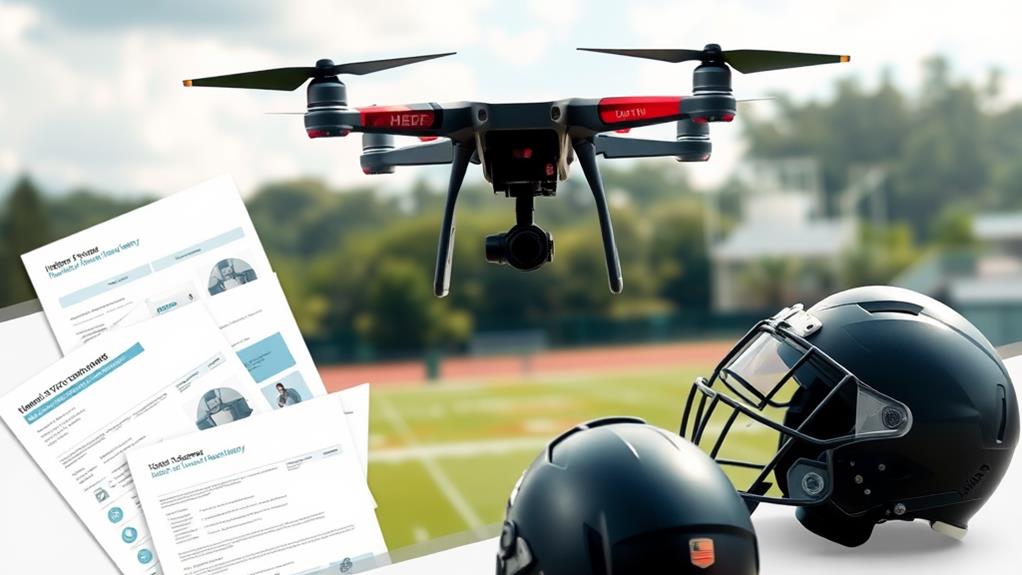
Leave a Reply